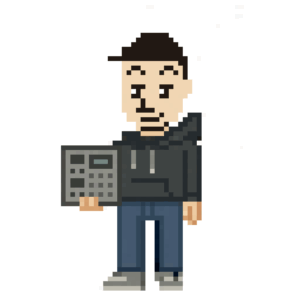An explanation of hip-hop drum patterns can help understand the fundamental rhythm and beat elements of this genre. Hip-hop originated in the late 1970s in the Bronx, New York, and has since become popular worldwide. The drum patterns in this genre are a crucial part of the rhythm, determining the feel and flow of the track.
Hip-hop drum patterns primarily consist of the following elements:
- Kick Drum (Bass Drum):
- Forms the basic beat of the song, typically emphasized on the beats in a 4/4 time signature, such as on the 1st and 3rd beats.
- In hip-hop, the kick drum is especially emphasized for its deep bass, giving the track depth and power.
- Snare Drum:
- Complements the kick drum beat, usually placed on the 2nd and 4th beats.
- The clear sound of the snare adds a rhythmic accent to the track, making it easier for the listener to feel the rhythm.
- Hi-Hat:
- Fills the space between the kick and snare, often played in eighth or sixteenth notes, adding tempo and texture to the track.
- The variation between open and closed hi-hat adds further rhythmic variation.
- Other Percussion:
- Adding claps, rimshots, and percussion instruments like congas, bongos, and shakers adds additional layers to the drum pattern, giving the track a unique character.
The evolution of sampling technology has also played a significant role in the development of hip-hop drum patterns. Sampling drum breaks from old soul, funk, and jazz records to loop and create new beats is a common technique. Additionally, many producers use drum machines and software to program original drum patterns.
Combining these basic elements and techniques results in the rhythmic and groovy drum patterns characteristic of hip-hop.
What BPM matches hip-hop drum patterns?
The BPM (Beats Per Minute) suitable for hip-hop drum patterns varies widely depending on the style and mood of the music, but generally, a range of 80BPM to 100BPM is commonly seen. Within this BPM range, beats that are easy for listeners to groove to and enjoy in a relaxed manner can be created, making it a popular choice for classic hip-hop tracks.
However, hip-hop is a very diverse genre, and different styles are suited to different BPMs:
- Old School Hip-Hop: 80BPM to 100BPM. This range is commonly seen in early hip-hop tracks, providing a speed at which rhythms and lyrics are clearly discernible.
- Trap Music: 140BPM to 160BPM. Trap features faster, more aggressive beats with characteristic rapid hi-hat rolls and quick snare drums.
- Boom Bap: 85BPM to 95BPM. Boom bap is known for its heavy drum breaks and smooth samples, popular in the 90s hip-hop scene.
- Experimental Hip-Hop: The BPM can vary widely, significantly depending on the experimental nature of the track.
Producers and artists choose BPM based on the intended atmosphere of the track and the message they wish to convey to listeners. Therefore, the “appropriate” BPM in hip-hop depends largely on the type of music being created and the specific emotions that the music embodies.


Leave a Reply